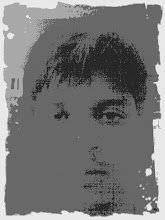| |
| Thursday, January 24, 2008 |
| Do you have something worth publishing? Here are the main criteria to consider: |
Significance: Why was this work done? Did you solve an important problem of current interest or is it an obscure or obsolete problem?
Originality/Novelty: Is your approach novel or is it tried-and-true? Did you need to develop new tools, either analytical or physical?
Completeness: Have you tested a wide range of scenarios, or is this just a simple proof-of-concept?
Correct: Is your solution technically sound or are there errors?
If you can give a positive answer to all the above, then it is time to write up your results and submit a a paper.
Next, you might wonder where to publish. Generally, there are two main choices:
Conference: A conference is a good place for work in progress.
Conferences offer rapid time-to-publish, plus you will often get feedback on your work when you present it.
Most conferences require the full paper for review, but some require just an abstract.
Most conferences require the final draft be submitted prior to the conference, while a few publish post-proceedings.
Page lengths and acceptance standards vary widely from conference to conference, but generally conference papers are shorter than full journal papers and tend to be subjected to less scrutiny.
Journal: Journal papers are generally considered more prestigious than conferences, but not all journals are the same.
Some journals are published by nonprofit technical societies like IEEE or ACM, while others are privately produced International Journal.
Some journals only run letters, while others have both correspondences and full transactions papers.
Some journals have special issues devoted to certain topics, while most others have an open call.
The time from submission to publication can vary widely, but most journals list each paper's submission date so you can get an idea of how long it might take. Example
Most journals have their own webpage with important information
Some journals publish the average time for the first review.
Some journals publish their acceptance rates.
Note that there are sometimes other publishing opportunities including Technical Magazines, Newsletters, Book Chapters, Whitepapers, or even entire Books. Also, your thesis and dissertation can become more widely circulated than you might expect (especially with the emergence of ETD).
What are the main parts of a paper?
Title: Brief and descriptive.
Abstract: A clear indication of objective, scope and results.
Index Terms: A short set of keywords for search engines (e.g. IEEE Explore).
Body of Paper Logical organization; purpose, description of problem, means of solution, results, and conclusions.
Introduction: Purpose, problem statement, literature review, brief overview of approach taken.
System model: Detailed mathematical description of problem
Solution and analysis
Results: Simulations run or measurements taken
Conclusion
Bibliography: Complete list of related papers in IEEE format.
More information can be found here: IEEE Tools for Authors
How do I produce the paper using latex or word?
How do I cite references? See page 6 of the IEEE guidelines for authors.
What about figures and graphics?
How do I actually submit the paper? What format?
What happens after it is submitted?
Editor in chief checks page lengths and assigns to associate editor.
Associate editor find reviewers.
Reviewers enter their review.
Associate editor makes recommendation to EIC.
EIC approves recommendation and notifies authors.
Manuscript Central
Who reviews my paper?
Peer reviewed.
Other authors that submit to same journal.
Authors working on this topic, often chosen from your list of references.
Example Manuscript Details
What should I expect from my review?
Example Review Form
What do I do if it was not accepted?
What if it needs another round of review?
Response to the reviewers.
What still needs to be done after it is accepted?
Final formatting
Journals only
Figures might need to be in separate files (tiff/eps format)
Author biographies and photos
Copyright Transfer Form
Upload/submit final electronic copy
Pay page costs (journal) or register for conference
Review the page proofs
Some pitfalls:
Don't use figures from another paper without credit and permission.
Make sure that you've cleared the paper with your research sponsor.
Self plagiarism: Only send your paper to a single conference or journal at a time.
Not showing at a conference: Most conferences won't publish if you don't show. |
posted by Share@U @ 2:06 AM  |
|
|
|
|

Name: Titon Pattanaik Share@U
Home:
About Me:
See my complete profile
Important Links...
|

